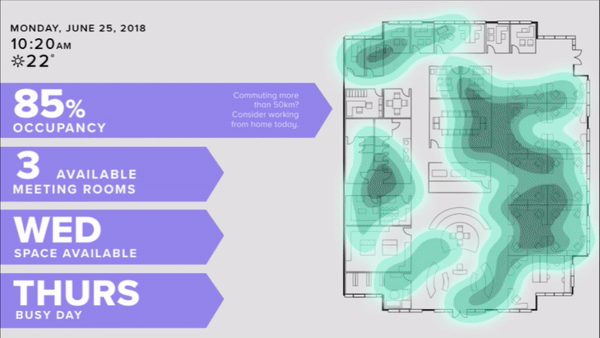3 Pillars of a Great Workplace Experience
In 2017, Forbes cited this study, stating that “happy employees are 20% more productive than unhappy employees”. It further stated that stock prices of Fortune’s “100 Best Companies to Work for" rose 14% per year from 1998 to 2005, while companies not on the list only reported a 6% increase.
Creating optimal work environments that benefit the workplace experience, increases happiness and productivity. But what makes up a good workplace experience, and how can organizations create it?
When we talk to our clients and partners about a desirable experience that fosters their culture, hiring, and employee engagement, there’s no shortage of attributes:
-
Technology - not just access to the latest technologies, but the desire to explore new solutions that make work easier and faster.
-
Office Space - a pleasing yet tailored mix of collaboration zones, meeting rooms, privacy spaces, hotelling and dedicated offices.
-
Environment - aesthetically engaging, but more importantly functioning and frictionless experience.
Each workplace tailors these attributes in such a way that it’s as unique as a fingerprint. So how can you build one? And with the laundry list of wants and needs, isn’t it cost-prohibitive to create a bespoke solution?
The short answer to the latter is that technologies like indoor location are doing double duty in creating amazing employee experiences, while improving overall operations. It also forms a single backbone upon which a wide variety of applications can run. The net benefit is a technology that can be incorporated into a multitude of existing applications and services to dramatically improve experience and reduce costs.
Let’s take a closer look into how location intelligence can support the desired attributes of an office:
1. Environment
The concept of Smart Buildings and Smart Offices falls squarely under the idea of creating a frictionless workplace experience enabled by technology. To enable a building’s security, lighting, air conditioning/heating and other systems to respond to the needs of its tenants, requires an intimate yet unobtrusive way to capture and connect that information to the systems responsible for creating a comfortable environment. Indoor location not only enables these systems to respond - like increasing the AC as people enter a room vs. as the temperature rises - but also offers predictive capabilities to proactively streamline systems based on patterns and behaviors about how the space is used. Indoor location can decrease these utility costs by up to 18%.
2. Office Space
How an office is designed directly impacts the perception of the space as well as the productivity of its tenants. Whether your company needs dedicated offices, meeting rooms, or prefers open concept or hotelling, each design needs to be informed by the behavior of your employees over time. In a meeting the other day, we heard from one partner that their office didn’t have a meeting-room booking system at all. Instead it was a line-of-sight availability and that she had spent 20 minutes circling the rooms. Not very productive. With Indoor Location feeding into a simple web-dashboard, employees can see what spaces are available based on whether someone is in them. No more squatting, no more empty rooms that were booked but not used.
 A simple dashboard helps improve employee productivity and space utilization. One client uses it to help ensure commuting staff are able to find a workspace.
A simple dashboard helps improve employee productivity and space utilization. One client uses it to help ensure commuting staff are able to find a workspace.
3. Technology
Creating a modern, innovative workplace is no longer a nice-to-have for employers. Prospective employees want to know that they’ll have access to the latest technologies and applications to be their most efficient. Open indoor location platforms like InnerSpace enable the data to kick-off workflows in common communications, CRM, BI, ERP and other workplace tools. For one client, we created a Slack integration so that employees could find out how busy it is at their company-subsidized Cafe. The goal is to help employees get food quickly and conveniently, but also to influence traffic patterns and adjust staffing levels.
Creating good workplace experiences can be achieved with indoor location technology and decision-makers are starting to take notice. According to the British Land and Worktech Academy study, Smart Offices: A 2017 Vision for the Future, 87% of decision-makers responded that they require smart office technology for their next office location. Respondents were interested in improving all of the items mentioned above: Environment, Office Space and Technology including things like self-adjusting lighting and heating systems based on room occupancy and usage. Furthermore, they were also interested in an app that allows teams to book desks and meeting rooms, and having desk/room sensors that track usage for efficiency and monitoring.
The need for decision-makers to seek out and implement new technologies to improve and create good workplace experiences is evident - indoor location is the answer.
Accurate space utilization data through Wi-Fi?
We'll prove it to you.
See why industry leaders leverage InnerSpace to generate valuable insights that go beyond occupancy.

